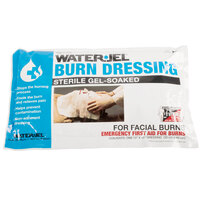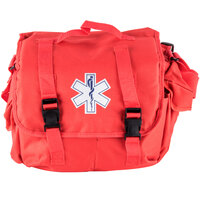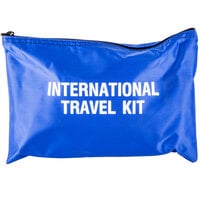-
An empty cart
You have no item in your shopping cart
A first aid kit is a collection of supplies and equipment that is used to give medical treatment. There is a wide variation in the contents of first aid kits based on the knowledge and experience of those putting it together, the differing first aid requirements of the area where it may be used and variations in legislation or regulation in a given area.
First aid kits can be assembled in almost any type of container, and this will depend on whether they are commercially produced or assembled by an individual. Standard kits often come in durable plastic boxes, fabric pouches or in wall mounted cabinets. The type of container will vary depending on the purpose, and they range in size from wallet-sized through to large box.
It is recommended that all kits are in a clean, waterproof container to keep the contents safe and aseptic. Kits should also be checked regularly and restocked if any items are damaged or are out of date.
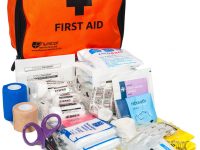
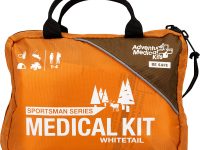
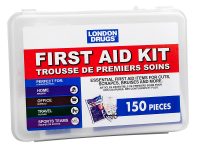
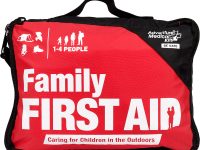
First aid kit containers are classified by their portability, resistance to water, corrosion, and impacts, and their ability to be mounted in a single location. There are four different types of first aid kit containers.
| TYPE OF FIRST AID KIT CONTAINER | PORTABLE AND MOUNTING REQUIREMENTS | OTHER NOTES |
|---|---|---|
|
|
|
|
|
|
|
|
|
|
|
First Aid Kit Information
Because of the varying degrees of first aid training among staff, including an information card on how to treat basic injuries and illnesses should be included with first aid kits. These instructions should be easy to read and understand, include diagrams or pictures to help visualize first aid treatment skills, and cover usage instructions for all the supplies contained within the first aid kit. Most pre-assembled first aid kits include this information in a booklet or pamphlet. If you add supplemental information to your first aid kits, make sure that it is from a credible source such as ANSI or ISEA. Regularly checking information contained in the first aid kits is necessary to make sure that it up to date with the latest medical best practices.
The following information is great to include inside a first aid kit or as a poster near the first aid station:
- How to perform the Heimlich maneuver
- Instructions on how to perform CPR
- Directions for controlling bleeding
- How to immobilize a broken limb
- Ways to treat stings and bites
- First aid kit list of supplies
Other Types of First Aid Kits
First Aid Burn Relief Kits
Burn relief kits contain all the supplies necessary to treat burn injuries. Proper use of burn supplies help reduce patient pain as well as minimize scarring. Most burn kits contain ointment to sterilize the burned area and reduce pain, burn dressings and gauze to cover burns, and burn gel to cool the burned area and promote healing.
First Aid Emergency Kits
Emergency kits contain the necessary first aid supplies to handle most common first aid injuries and illnesses as well as some additional supplies which can be helpful in survival, search and rescue, or disaster events. In addition to medical supplies, these kits may include rescue supplies such as whistles, flashlights, food and water ration packets, and emergency blankets. Emergency kits generally come in large duffel bag style containers with carrying straps, secure closure buckles, and reflective emblems for visibility.
First Aid Travel Kits
First aid travel kits generally come in a small container size making them perfect for placing in vehicles or luggage. These kits have fewer first aid supplies than other types of first aid kits as their main purpose is to be a compact first aid kit used to treat minor injuries or illnesses. Travel kits come in a variety of containers too. Some come in plastic or metal cases that can be mounted inside cars. Others are small, zippered cases that are perfect for sliding in a glove compartment or suitcase.
Frequently Asked Questions About First Aid Kits
Do I need to consult a physician or medical professional to approve first aid supplies in my business?
According to OSHA regulation 29 CFR 1910.151, first aid kits and first aid supplies do not need to be approved by a physician prior to use in a business. It is recommended to have the kits and supplies be selected by someone who is both competent in first aid and aware of the hazards found in that workplace.
Should first aid kits be regularly inspected to ensure the contents are complete and up to date?
Yes, first aid kits should be routinely inspected to make sure that they are not missing supplies or have medicines that are out of date. Additionally, the contents list for the first aid kit should also be reviewed to make sure the kit still meets the needs of the workplace.
Can over-the-counter medicines be put in first aid kits?
If over-the-counter medicines are put in first aid kits they should be in single-dose, tamper-evident packages and labeled per FDA requirements. Products known to cause drowsiness should not be included in first aid kits.

